Al Jaziri’s Mechnical marvels which revolutionized engineering
Badi’al-Zaman Abū al-’Izz Ismā’īl ibn al-Razāz al-Jazarī (1136–1206 C.E.) (Arabic:, Kurdish: Ebûlizê Cizîrî) was an Arab Muslim polymath: a
scholar, inventor, mechanical engineer, craftsman, artist, and mathematician from Jazirat ibn Umar (current Cizre), who lived during
scholar, inventor, mechanical engineer, craftsman, artist, and mathematician from Jazirat ibn Umar (current Cizre), who lived during
the Islamic Golden Age (Middle Ages). He is best known for writing the al-Jāmiʿ bain al-ʿilm wa al-ʿamal al-nāfi fī ināat al-iyal (The Book of Knowledge of Ingenious Mechanical Devices) in 1206, where he described
fifty mechanical devices along with instructions on how to construct them.
fifty mechanical devices along with instructions on how to construct them.
Like his father before him, he served as chief engineer at the Artuklu Palace, the residence of the Mardin branch of the Turkish Artuqid dynasty which ruled across eastern Anatolia as vassals of the Zangid
rulers of Mosul and later Ayyubid general Saladin.[10] He was born in the Kurdish city of Tor, now located in the district of Cizre in south-Eastern Turkey.
rulers of Mosul and later Ayyubid general Saladin.[10] He was born in the Kurdish city of Tor, now located in the district of Cizre in south-Eastern Turkey.
al-Jazari was part of a tradition of craftsmen and was thus more of a practical engineer than an inventor who appears to have been “more interested in the craftsmanship necessary to construct the devices than
in the technology which lay behind them” and his machines were usually “assembled by trial and error rather than by theoretical calculation.”
in the technology which lay behind them” and his machines were usually “assembled by trial and error rather than by theoretical calculation.”
His Book of Knowledge of Ingenious Mechanical Devices appears to have been quite popular as it appears in a large number of manuscript copies, and as he explains repeatedly, he only describes devices he has built
himself. According to Mayr, the book’s style resembles that of a modern “do-it-yourself” book.
himself. According to Mayr, the book’s style resembles that of a modern “do-it-yourself” book.
The most significant aspect of al-Jazari’s machines are the mechanisms, components, ideas, methods, and design features which they employ.
The Elephant Clock was a medieval invention by Master Engineer Al-Jazari (1136-1206), consisting of a weight powered water clock in the form of an elephant.
The various elements of the clock are in the housing on top of the elephant. They were designed to move and make a sound each half hour.
The Elephant Water Clock is an iconic example of one of al-Jazari’s pieces of fine technology. In addition to telling the time, it celebrates the universality of Islam by incorporating elements from
Spain, Phoenicia, Egypt, Iraq, India and China.
The Elephant Water Clock is an iconic example of one of al-Jazari’s pieces of fine technology. In addition to telling the time, it celebrates the universality of Islam by incorporating elements from
Spain, Phoenicia, Egypt, Iraq, India and China.
A modern full-size working reproduction, produced by the Foundation for Science, Technology and Civilisation (FSTC) can be found in the Ibn
Battuta Mall, in Dubai (UAE).
Battuta Mall, in Dubai (UAE).
Another working reproduction can be seen outside the Musée d’Horlogerie du Locle, Château des Monts, in Le Locle, Switzerland.
In addition to its mechanical innovations, the clock itself is seen as an early example of multiculturalism represented in technology. The elephant represents the Indian and African cultures, the dragon
represents Chinese culture, the phoenix represents ancient Egyptian culture, the water work represents ancient Greek culture, and the turban represents Muslim cultures.
represents Chinese culture, the phoenix represents ancient Egyptian culture, the water work represents ancient Greek culture, and the turban represents Muslim cultures.
ROBOTIC MAN
One of the many robots or automatons that al-Jazari made for the Kings of Diyarbakr was the ‘Robotic Man’. This robot, which is modeled on a 12-year old boy, provides water, a towel and a comb for the King during
his ablutions.
One of the many robots or automatons that al-Jazari made for the Kings of Diyarbakr was the ‘Robotic Man’. This robot, which is modeled on a 12-year old boy, provides water, a towel and a comb for the King during
his ablutions.
CASTLE CLOCK
The Castle Clock is another example of one of al-Jazari’s famous Water Clocks. In this Clock, a ball drops from the falcons’ beaks into the vases, small doors open and close, a moon moves across the face of the Clock, and the musicians play their instruments every hour. The mechanism can be seen on the back of the Clock.
The Castle Clock is another example of one of al-Jazari’s famous Water Clocks. In this Clock, a ball drops from the falcons’ beaks into the vases, small doors open and close, a moon moves across the face of the Clock, and the musicians play their instruments every hour. The mechanism can be seen on the back of the Clock.
WATER-RAISING DEVICES
This dynamic scale model display depicts five famous water-raising devices made by Muslim engineers. These devices include al-Jazari’s
Reciprocating Pump, One-Scoop Pump, Chain-of-Pots and Four-Scoop Pump, and Taqi al-Din’s Six-Cylinder Pump.
This dynamic scale model display depicts five famous water-raising devices made by Muslim engineers. These devices include al-Jazari’s
Reciprocating Pump, One-Scoop Pump, Chain-of-Pots and Four-Scoop Pump, and Taqi al-Din’s Six-Cylinder Pump.
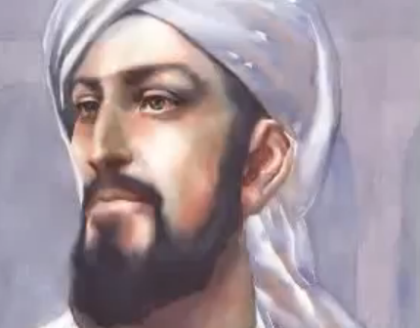
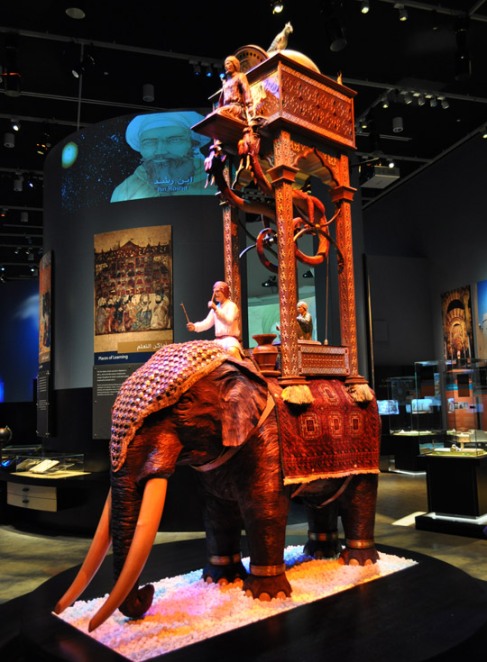
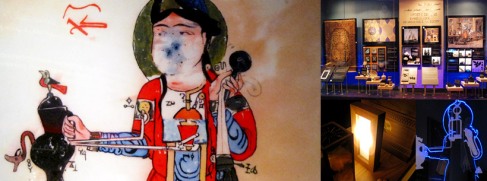
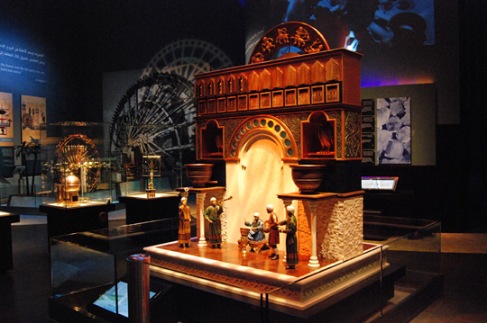
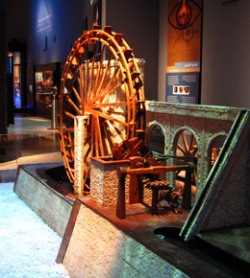
No comments:
Post a Comment